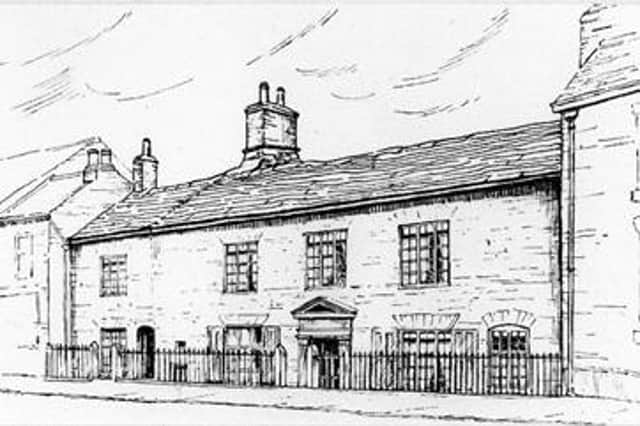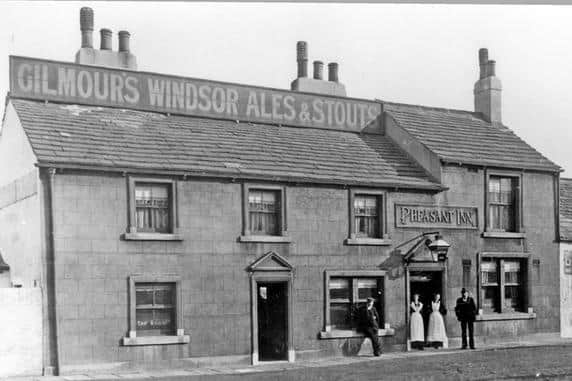How the revival of Attercliffe revival reflects Sheffield suburb's illustrious history


Bouncing back from the untimely demolition of Don Valley Stadium the site is now well established as the heart of one of the largest clusters of wellbeing, sports training, medicine and education in the UK, including Hallam’s Advanced Wellbeing Centre, an artificial 3G football pitch, the English Institute of Sport, Ice Sheffield, FlyDSA Arena, Oasis Academy and University Technical College OLP. They are soon to be joined by a new NHS Child Health Technology Centre and the Canon Diagnostic Research Centre as well as specialist commercial floorspace. The previous 150 years saw a dramatic change from open fields to the Brown Bayley Steelworks where Harry Brearley was manager with terraces of two-up two downs crowding around the great clanging, belching black sheds, followed in the 1980s by a moonscape of dereliction and then by the creation of the new East End Park and Don Valley Stadium and Bowl.
One might conclude that was quite enough history for one site. But actually it turns out that the village of Attercliffe was also a nationally recognised centre of education as far back as the C17th, that Atterclife was the birthplace of the modern steel industry in the C18th and a national and international focus for sports training and events throughout the second half of the C19th, albeit of a very different character.
Advertisement
Hide AdAdvertisement
Hide AdThe educational establishment was the Attercliffe Academy, located on what is now Leeds Road, exactly where the contemporary Oasis Academy now sits. It was housed in a Jacobean manor house - Attercliffe Old Hall (similar in scale and décor to Carbrook Hall) and operated from 1688 to around 1718 under two successive local dissenting ministers – the Reverends Richard Franklin and Timothy Jollie, both of whom would probably have merited inclusion in David Price’s Sheffield Troublemakers if he had chosen to go back to the Restoration period. Franklin and Jollie were part of a generation of radical protestant ministers expelled from the Church of England and excluded from established universities under Charles 2nd who fought back by setting up their own ‘Dissenting Academies’. Freed from the traditions and rules of Oxford and Cambridge these new academies were free to teach a wider range of subjects including science alongside a ‘non-conformist’ approach to theology and philosophy.


Although not large by modern standards the Attercliffe Academy in only 30 years produced an impressive roster of pupils, including a future Archbishop of Canterbury, a Lord Chancellor of Ireland and Nicolas Saunderson, the blind mathematician from Thurlstone who went on to become Lucasian Professor of Mathematics at Cambridge - the chair previously held by Isaac Newton and much later by Steven Hawking.
Perhaps it was this reputation for non-conformist scholarship which attracted the Quaker second generation Dutch immigrant Benjamin Huntsman to move there and develop his world beating crucible steel melting technique on the other side of the village green - Cocked Hat Piece (or Goose Turd Green as it was also known) in workshops behind his house, which still stands, albeit in an embarrassingly sorry state.
We think of Victorian Sheffield mainly as a classic Lowriean landscape of smokey factories and slum housing, which it was, but it was also a hotbed of sporting activity, driven by the demand for new forms of mass leisure from thousands of industrial workers who flocked to the East End. The role of Sheffield in the formation of the modern game of football is often told, but it seems that Sheffield was also a major international centre for another spectator sport, the largely forgotten one of ‘Pedestrianism’ a fore-runner of todays track and field but based on walking not running. Much of the activity happened around the still semi-rural Attercliffe.
Advertisement
Hide AdAdvertisement
Hide AdPedestrianism developed in the C19th out of a sporting wager tradition where men replaced horses or dogs to either race around fixed distances or undertake punishing ‘Iron Man’ type endurance events where contestants competed to walk the longest distance without rest, often over six days. A major venue for both forms in Sheffield was at Attercliffe New Hall, on the north bank of the Don just off modern New Hall Road, laid out as a commercial Pleasure Ground in the mid-C19th. Among several other attractions (Pagoda St recalls one of these) was an outdoor cinder running track where races such as the annual Sheffield Handicap was staged (other tracks operated at Hyde Park and Queens Ground in Hillsborough) and paying crowds of 10-20,000 were not uncommon.


Training centres were established, where professional pedestrians prepared for big races, usually these were at pubs, one of the most famous being the Old Pheasant Inn and Sports Ground on Attercliffe Common (a later version of the pub still stands now a restaurant) run by William Salt, himself a champion swimmer, who trained pedestrians and boxers and promoted fights, races and bowls matches there. Contestants were usually working class men and prize money, plus a share of the gate and the proceeds of widespread betting were a big attraction for them and for the promoters.
One of the most successful was George Littlewood of Darnall, whose grave has recently been rediscovered in Darnall Cemetery. His exploits as an endurance athlete made him a sporting hero both in the UK and US, where he established a world record at Madison Square Gardens which has yet to be beaten. He has been described as ‘the greatest long distance foot athlete ever seen’. Littlewood survived many gruelling challenges and earned enough to retire to Attercliffe where (inevitably) he ran a pub known appropriately as the Champions Rest (later the Kings Head, still standing but not serving). Other local heroes of the track include Arthur Wharton (the pioneering black footballer and racer), Peter Crossland ‘the Sharp Sheffield Blade’ who also made it big in the US and the colourful trainer Ink Smith. (For more rip-roaring details see Glenn Piper’s great article at https://www.playingpasts.co.uk/}
But the blatantly commercial basis of the pedestrian events, the frequent attempts to sabotage opponents or to fix results, plus the consumption of copious amounts of alcohol, occasional crowd invasions and riots all contributed to a gruesome reputation which was increasingly unpalatable for middle and upper class fans and led directly to the establishment of the Amateur Athletics Association in 1866 with a mission to ‘clean up’ the sport. However the battle between largely working class professionals and more upper class amateurs for control continued well into the C20th (it forms part of the plot of Chariots of Fire in the character of Sam Mussabini) and the popularity of pedestrianism as a mass spectator sport continued in Sheffield, the UK, US and Australia well into the C20th.
Advertisement
Hide AdAdvertisement
Hide AdThe values and motivation of today’s sporting and educational activities at Attercliffe are no doubt very different from the uproarious days of the New Hall Ground and Sheffield Handicap but the achievements of these tough and dedicated working class athletes endure as does the innovatory spirit of Benjamin Huntsman and the dissenting Attercliffe Academy!
Comment Guidelines
National World encourages reader discussion on our stories. User feedback, insights and back-and-forth exchanges add a rich layer of context to reporting. Please review our Community Guidelines before commenting.